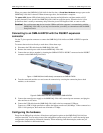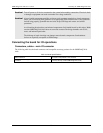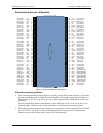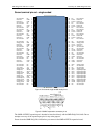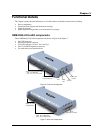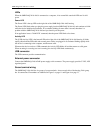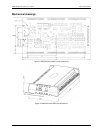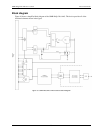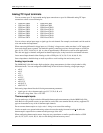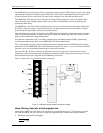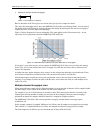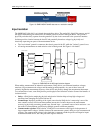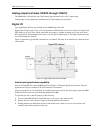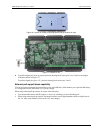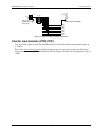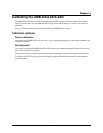
OMB-DAQ-2416-4AO User's Guide Functional Details
17
Analog/TC input terminals
You can connect up to 32 single-ended analog input connections or up to 16 differential analog/TC input
connections to these screw terminal pins.
CH0H and CH0L
CH1H and CH1L
CH2H and CH2L
CH3H and CH3L
CH4H and CH4L
CH5H and CH5L
CH6H and CH6L
CH7H and CH7L
CH8H and CH8L
CH9H and CH9L
CH10H and CH10L
CH11H and CH11L
CH12H and CH12L
CH13H and CH13L
CH14H and CH14L
CH15H and CH15L
You can select a unique input range or signal type for each channel. For example, one channel could be used for
volts and another for temperature.
When connecting differential voltage inputs to a "floating" voltage source, make sure there is a DC return path
from each voltage input to ground. You make this path by connecting a resistor from each input to a GND pin
(pins 18, 36, 39, 42, 44, 46, 66, 81, 84). A value of approximately 100 kΩ can be used for most applications.
This does not apply to channels configured for thermocouple input, as they have their own internal reference.
Leave unused input channels either floating or tied to GND (pins 18, 36, 39, 42, 44, 46, 66, 81, 84).
Source impedances should be kept as small as possible to avoid settling time and accuracy errors.
Analog input mode
The OMB-DAQ-2416-4AO makes high-resolution voltage measurements in either a single-ended or fully
differential mode. You can configure the OMB-DAQ-2416-4AO for the following voltage input ranges.
±20 V
±10 V
±5 V
±2.5 V
±1.25 V
±0.625 V
±0.3125 V
±0.15625 V
±0.078125 V
Each analog input channel has the following measurement parameters:
signal type of volts or thermocouple type J, K, T, E, R, S, B, or N
full scale voltage from -20 to + 20 VDC
Thermocouple inputs
You can make up to 16 high-resolution differential thermocouple measurements with the OMB-DAQ-2416-
4AO. Built-in cold-junction sensors are provided for each of the screw-terminal blocks, and any supported TC
type can be attached to any of the 16 thermocouple channels.
Do not connect thermocouples as single-ended—doing so can cause false readings.
You do not need to use ground-referencing resistors because the analog front-end circuit level-shifts the
thermocouple's output into the common-mode input range of the A/D.
When configuring thermocouple sensors, keep any stray capacitance as small as possible relative to GND
(pins 18, 36, 39, 42, 44, 46, 66, 81, 84) to avoid settling time and accuracy errors.



